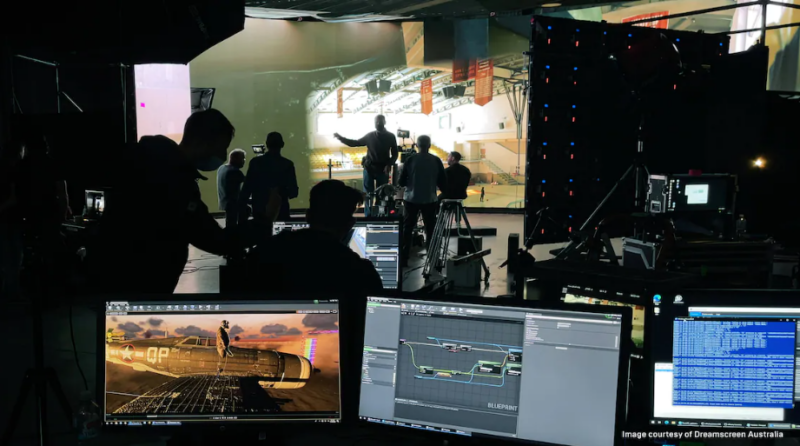A Crack in the Wall Between the Real and Virtual Worlds
 Assuming that you’ve not been living under a rock, you’ve at least heard about the Pokémon GO! craze. For the uninitiated, Pokémon Go is an augmented reality game produced by Niantic (in partnership with Nintendo, which owns the rights to the intellectual property on which it is based) in which one needs to hunt the titular Pokémon in the real world. Pokémon, once captured, can be trained, leveled up, and used to battle for control of Pokémon gyms, which are also real-world locations. It is, at the very least, an excuse for gamers to get out and have some exercise. For those of us in the AV industry, it brings the idea of augmented reality to the forefront in a way it hasn’t been before — even by similar AR games. So what does it mean to us? Perhaps nothing. Perhaps everything. More likely something in between.
Assuming that you’ve not been living under a rock, you’ve at least heard about the Pokémon GO! craze. For the uninitiated, Pokémon Go is an augmented reality game produced by Niantic (in partnership with Nintendo, which owns the rights to the intellectual property on which it is based) in which one needs to hunt the titular Pokémon in the real world. Pokémon, once captured, can be trained, leveled up, and used to battle for control of Pokémon gyms, which are also real-world locations. It is, at the very least, an excuse for gamers to get out and have some exercise. For those of us in the AV industry, it brings the idea of augmented reality to the forefront in a way it hasn’t been before — even by similar AR games. So what does it mean to us? Perhaps nothing. Perhaps everything. More likely something in between.
What Is It?
This is not Niantic’s first game. In fact, Pokémon Go! Is based on the game engine originally developed for the science-fiction AR game Ingress in 2012, when Niantic was still part of Google. Those who’ve played Ingress recognize familiar elements. Important real-world locations (post offices, public art, libraries, etc.) become in-game locations — “gyms” over which you battle against opposing Pokémon and “Pokéstops” at which one can replenish in-game supplies. As with Ingress, the game is entirely dependent on your phone’s GPS and data connection.
Each game is built around a secret-history fantasy narrative in which the game world is presented as an aspect of the real world which is hidden from most ordinary people. For Pokémon players it is the existence of magical beasts; for Ingress it is the incursion of extradimensional entities called “shapers” into our world. In neither case is the story all that important; it takes a back seat to gameplay.
The new gameplay element in Pokémon Go is a visual augmented reality element to add to the location-based augmented reality. The first augmentation to our reality — that the water tower is really a Pokéstop in which one can replenish supplies — is familiar to Ingress players. The second comes when one faces an actual Pokémon and can see the creature on ones phone screen, superimposed on the real-world image from your camera. In some environments, the game engine appears smart enough to set the Pokémon on the ground or other solid surface; in others it seems to randomly float about, not terribly well integrated at all with its environment. While the cartoonish-looking Pokémon lacking the detail or realism for their appearance to be truly immersive, their visual presence in the real world is another step towards connecting game world with real world. Seeing a Pokéball bounce on the sidewalk at someone’s feet is a striking experience and represents a crack in the wall between the real and virtual worlds.
 Monetization?
Monetization?
It can also be used to drive behavior. AV blogger and podcaster Corey Moss noted the following on Twitter:
I saw how an AV integrator has become a #Pokestop – is this the new way to find customers? #AVTweeps
— Corey Moss (@Cbmoss) July 15, 2016
I don’t know how much the average AV integrator relies on walk-bys (I’d guess somewhere between “none” and “absolutely none”), but Moss does have a point. Remember I said that post offices, libraries and other noteworthy public buildings are Ingress portals? I missed a category: Every Duane-Reade store is also a portal. I am certain this was a deal with Duane-Reade to increase foot-traffic to their stores. Of course, foot traffic does more for a pharmacy/convenience store than it will for an AV integrator — though I can see an intriguing idea in sending people to an AV contractor’s more striking public projects if one could also call attention to them and highlight who it was that installed them.
The interesting thing here is that you have dual potential avenues to make money — one more insidious than the next. Think about this: It is possible, given the correct digital incentives, to influence where people go in the real world. It isn’t mass mind-control, but it’s something similar.
The Bigger Picture?
The question AV professionals are now asking each other is whether or not there is a bigger picture — if the broad adoption of this toy is a sign that AR or VR might be moving close enough to mainstream adoption to have an effect on what we do. I’ll say yes and no; yes in that AR and VR are each becoming prevalent enough and low enough cost that we need at least ask the question. The story twenty years ago was of advanced technology from the boardroom making its way to the living room. Over the past decade, the new story has been residential technology filtering up towards the corporate world. We now may be moving past residential and towards personal mobile technology. For thirty dollars you can put a cardboard box around your phone and turn it into a VR headet. For free you can download toys like Ingress or Pokémon Go.
Gary Kayye came closest to explaining the paradigm shift in saying that we each hold a “personal information device” which, in some ways, replaces a large-scale display. Another way of framing it is that a video display, a camera, a microphone and a loudspeaker are dispatched to everyone’s physical location at nearly any time.
One can send content to a display and a loudspeaker in nearly any location. And receive content from a camera and a microphone (and other sensors).
We talk often about unified communication, and unified communication strategies. VR and AR may not be complete solutions, but they can become part of a unified content distribution strategy.
Again — What Is It?
To understand the viral phenomenon of Pokémon Go and its sudden reach is a study in marketing and public relations. That’s important, but not everything; what’s important to us is to see what this tells us about technology, what has actually been built and what that means. Can something else be built upon it? Is it proof of concept to build something different entirely? Is it a metaphor?
So what is Pokémon Go? It is:
- The Game Engine. A software tool which first formed the basis if Ingress and is now being turned to a different genre. The system for taking location and identity and turning it into interaction with objected overlaid onto the real world.
- Hardware. It is facilitated by ubiquitous hardware. You have a camera. You have a microphone. You have a display, you have a loudspeaker. And sensors to know where they are. Always.
- Infrastructure. GPS Satellites and wireless data, available in broad areas of the country. To make it work.
- Culture. A growing willingness to view part of life through our devices, a lack of inhibition about sharing our data — now including physical location in the real world.
Finally, Pokémon Go is the story Niantic and Nintendo built atop the software and hardware, facilitated by the existence of culture.
The hardware is there for everyone, as is the infrastructure and a new culture. It’s now up to us to find ways to use it.





